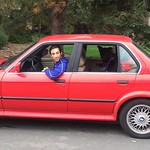We could all be in for it in not too long. One of my biggest issues with California was the rules imposed on modified cars, I moved somewhere where they don't even have Smog Machines, and now this...
We will be smog checkin' tractors and farm implements in the next ten years, just watch.
We will be smog checkin' tractors and farm implements in the next ten years, just watch.
New smog rule could be a surprise to some counties
NOAKI SCHWARTZ
Published: Today

FILE - In this April 28, 2009 file photo, smog covers downtown Los Angeles. The Environmental Protection Agency on Thursday proposed stricter health standards for smog, replacing a Bush-era limit that ran counter to scientific recommendations. (AP Photo/Nick Ut, File)
LOS ANGELES (AP) - Parts of the country that haven't worried about air pollution may soon be in the fight California has faced for decades: cleaning up smog.
Stricter rules proposed Thursday by the Obama administration could more than double the number of counties across the country that are in violation of clean air standards. That would likely have a big impact on other parts of the nation since California already sets stringent standards for cars, ships and trucks.
"This kind of levels the playing field," said Leo Kay, spokesman for the California Air Resources Control Board. "In California we've set pretty tough air pollution standards for a long time now and this brings the rest of the country to the same level."
More than 300 counties - mainly in southern California, the Northeast and Gulf Coast - already violate the current, looser requirements adopted two years ago by the Bush administration.
For the first time, counties in Idaho(fuck), Nevada, Oregon, the Dakotas, Kansas, Minnesota and Iowa might be forced to find ways to clamp down on smog-forming emissions from industry and automobiles, or face government sanctions, most likely the loss of federal highway dollars.
The tighter standards will be costly but will ultimately save billions in avoided emergency room visits, premature deaths, and missed work and school days, the EPA said.
The proposal presents a range for the allowable concentration of ground-level ozone, the main ingredient in smog, from 60 parts per billion to 70 parts, as recommended by scientists during the Bush administration. That's equivalent to a single tennis ball in an Olympic-sized swimming pool full of tennis balls.
EPA plans to select a specific figure within that range by August. Counties and states will then have up to 20 years to meet the new limits, depending on how severely they are out of compliance. They will have to submit plans for meeting the new limits by end of 2013 or early 2014.
Former President George W. Bush personally intervened in the issue after hearing complaints from electric utilities and other affected industries. His EPA set a standard of 75 parts per billion, stricter than one adopted in 1997 but not as strict as what scientist said was needed to protect public health.
Parts of the country that have already spent decades and millions of dollars fighting smog and are still struggling to meet existing thresholds questioned what more they could do.
"This EPA decision provides the illusion of greater protectiveness, but with no regard for cost, in terms of dollars or in terms of the freedoms that Americans are accustomed to," said Bryan W. Shaw, chairman of the Texas Commission on Environmental Quality. Texas, with its heavy industry, is home to Houston, one of the smoggiest cities in the nation.
Even in California, easily the country's smoggiest state, regions that have not had to worry about reducing air pollution could face penalties under tough new clean-air standards.
Should the Environmental Protection Agency adopt the strictest measures, the new rules would go beyond California's own tough smog standards causing nearly three-quarters of the state's 58 counties to be in violation.
This would include less-populated areas known for their natural beauty or crisp coastal air such as Santa Cruz, Santa Barbara and San Luis Obispo.
The new rules would also push parts of the state already defined by smog - including Southern California, the smoggiest region of the U.S. - to find additional ozone emission reductions.
"Here in Los Angeles it's not going to be a radical change, but we're going to have to look at adopting additional measures," said Sam Atwood, spokesman for the state's South Coast Air Quality Management District, which regulates Los Angeles, Riverside, Orange and San Bernardino counties. "We're going to have to go back to the well."
EPA estimates meeting the new requirements will cost industry and motorists from $19 billion to as much as $90 billion a year by 2020. The Bush administration had put the cost of meeting its threshold at $7.6 billion to $8.5 billion a year.
Some industries reiterated their opposition to a stronger smog standard.
"We probably won't know for a couple of years just what utilities and other emissions sources will be required to do in response to a tighter ozone standard," said John Kinsman, a senior director at the Edison Electric Institute, an industry trade group. "Utilities already have made substantial reductions in ozone-related emissions."
Smog is a respiratory irritant that has been linked to asthma attacks and other illnesses. Global warming is expected to make it worse, since smog is created when emissions from cars, power and chemical plants, refineries and other factories mix in sunlight and heat.
Environmentalists endorsed the new plan.
"The fact is every time a standard is set, it appears difficult," said Martin Schlageter, interim executive director for the Coalition for Clean Air. "Until you're on that path it just seems scary ... but then we get on the path and start doing it and pretty soon we're nearing our goal."
___
Associated Press writers Dina Cappiello in Washington, John McFarland in Dallas, Mike Stark in Salt Lake City, Alicia Chang in Los Angeles, Judith Kohler in Denver, Garance Burke in Fresno, Calif., contributed to this report.
___
On the Net:
Environmental Protection Agency: www.epa.gov
NOAKI SCHWARTZ
Published: Today

FILE - In this April 28, 2009 file photo, smog covers downtown Los Angeles. The Environmental Protection Agency on Thursday proposed stricter health standards for smog, replacing a Bush-era limit that ran counter to scientific recommendations. (AP Photo/Nick Ut, File)
LOS ANGELES (AP) - Parts of the country that haven't worried about air pollution may soon be in the fight California has faced for decades: cleaning up smog.
Stricter rules proposed Thursday by the Obama administration could more than double the number of counties across the country that are in violation of clean air standards. That would likely have a big impact on other parts of the nation since California already sets stringent standards for cars, ships and trucks.
"This kind of levels the playing field," said Leo Kay, spokesman for the California Air Resources Control Board. "In California we've set pretty tough air pollution standards for a long time now and this brings the rest of the country to the same level."
More than 300 counties - mainly in southern California, the Northeast and Gulf Coast - already violate the current, looser requirements adopted two years ago by the Bush administration.
For the first time, counties in Idaho(fuck), Nevada, Oregon, the Dakotas, Kansas, Minnesota and Iowa might be forced to find ways to clamp down on smog-forming emissions from industry and automobiles, or face government sanctions, most likely the loss of federal highway dollars.
The tighter standards will be costly but will ultimately save billions in avoided emergency room visits, premature deaths, and missed work and school days, the EPA said.
The proposal presents a range for the allowable concentration of ground-level ozone, the main ingredient in smog, from 60 parts per billion to 70 parts, as recommended by scientists during the Bush administration. That's equivalent to a single tennis ball in an Olympic-sized swimming pool full of tennis balls.
EPA plans to select a specific figure within that range by August. Counties and states will then have up to 20 years to meet the new limits, depending on how severely they are out of compliance. They will have to submit plans for meeting the new limits by end of 2013 or early 2014.
Former President George W. Bush personally intervened in the issue after hearing complaints from electric utilities and other affected industries. His EPA set a standard of 75 parts per billion, stricter than one adopted in 1997 but not as strict as what scientist said was needed to protect public health.
Parts of the country that have already spent decades and millions of dollars fighting smog and are still struggling to meet existing thresholds questioned what more they could do.
"This EPA decision provides the illusion of greater protectiveness, but with no regard for cost, in terms of dollars or in terms of the freedoms that Americans are accustomed to," said Bryan W. Shaw, chairman of the Texas Commission on Environmental Quality. Texas, with its heavy industry, is home to Houston, one of the smoggiest cities in the nation.
Even in California, easily the country's smoggiest state, regions that have not had to worry about reducing air pollution could face penalties under tough new clean-air standards.
Should the Environmental Protection Agency adopt the strictest measures, the new rules would go beyond California's own tough smog standards causing nearly three-quarters of the state's 58 counties to be in violation.
This would include less-populated areas known for their natural beauty or crisp coastal air such as Santa Cruz, Santa Barbara and San Luis Obispo.
The new rules would also push parts of the state already defined by smog - including Southern California, the smoggiest region of the U.S. - to find additional ozone emission reductions.
"Here in Los Angeles it's not going to be a radical change, but we're going to have to look at adopting additional measures," said Sam Atwood, spokesman for the state's South Coast Air Quality Management District, which regulates Los Angeles, Riverside, Orange and San Bernardino counties. "We're going to have to go back to the well."
EPA estimates meeting the new requirements will cost industry and motorists from $19 billion to as much as $90 billion a year by 2020. The Bush administration had put the cost of meeting its threshold at $7.6 billion to $8.5 billion a year.
Some industries reiterated their opposition to a stronger smog standard.
"We probably won't know for a couple of years just what utilities and other emissions sources will be required to do in response to a tighter ozone standard," said John Kinsman, a senior director at the Edison Electric Institute, an industry trade group. "Utilities already have made substantial reductions in ozone-related emissions."
Smog is a respiratory irritant that has been linked to asthma attacks and other illnesses. Global warming is expected to make it worse, since smog is created when emissions from cars, power and chemical plants, refineries and other factories mix in sunlight and heat.
Environmentalists endorsed the new plan.
"The fact is every time a standard is set, it appears difficult," said Martin Schlageter, interim executive director for the Coalition for Clean Air. "Until you're on that path it just seems scary ... but then we get on the path and start doing it and pretty soon we're nearing our goal."
___
Associated Press writers Dina Cappiello in Washington, John McFarland in Dallas, Mike Stark in Salt Lake City, Alicia Chang in Los Angeles, Judith Kohler in Denver, Garance Burke in Fresno, Calif., contributed to this report.
___
On the Net:
Environmental Protection Agency: www.epa.gov






 [/url]
[/url]
Comment